
30, Dec 2023
Black House Spiders in Florida
Florida is known for its beautiful scenery and balmy temperature, which support a wide variety of plants and animals. Silently, the black house spider (Badumna insignis) weaves its existence in the middle of this natural tapestry. We discover the importance of comprehending these arachnids’ habitats and activities as we set out on an investigation of them in the Sunshine State.
Species Identification
Decoding the Floridian Arachnid: Badumna insignis
Florida’s black house spiders are easily identifiable by their distinctive appearance and scientific emblem, Badumna insignis. Finding these arachnids among the many types of spiders in the area necessitates having an acute eye for their distinctive morphological traits and differentiating features.
Natural Habitat in Florida
Thriving in Florida’s Mosaic: Understanding Spider Adaptations
Black house spiders find Florida’s environment and geography to be excellent. These animals exhibit a remarkable ability to adapt to a variety of habitats, from the sun-drenched coasts to the inland subtropical regions, demonstrating their capacity to flourish in Florida’s distinctive ecological ecosystem.
Urban Environments
Silent Weavers: Black House Spiders in Floridian Homes
Within the walls of Florida’s urban dwellings, black house spiders find their place. We delve into their preferred indoor habitats, exploring the intricacies of their web-building behavior that transforms corners and crevices into architectural masterpieces.
Interaction with Humans
Closing the Distance: Comprehending Spider-Human Interactions
Black house spiders are often associated with myths and anxieties, which has led to a closer examination of their interactions with Floridians. We hope to promote harmony and understanding between humans and spiders by debunking myths about spider bites and promoting living together techniques.
Importance in Ecosystem
Ecological Stewards: Black House Spiders’ Role in Florida
Beyond our homes, black house spiders play a vital role in Florida’s ecosystem. We explore their significance in controlling insect populations and maintaining a delicate ecological balance that contributes to the overall health of the Sunshine State.
Managing Spider Presence
Guidelines for Harmonious Coexistence: Controlling Spider Populations in Florida
Practical tips for identifying black house spiders, implementing non-lethal methods for managing their populations, and understanding when professional intervention is necessary. Navigating the complexities of responsible spider management in Floridian urban environments.
Public Awareness and Education
Advocating for Spiders: Spreading Correct Information for Coexistence
Recognizing the importance of public awareness, we discuss the need to disseminate accurate information. Educational initiatives are explored, emphasizing the role of individuals in fostering understanding and encouraging responsible practices when living alongside black house spiders.
Conclusion
We summarize the most important realizations in both pieces of our research. This journey reveals a more nuanced view of black house spiders, the eight-legged tenants of Florida’s rich ecology, from allaying anxieties to recognizing their ecological contributions. We celebrate the interdependence of all living things in the beautiful ecological tapestry of the Sunshine State as we embrace cohabitation.
- 0
- By Faizan Khan
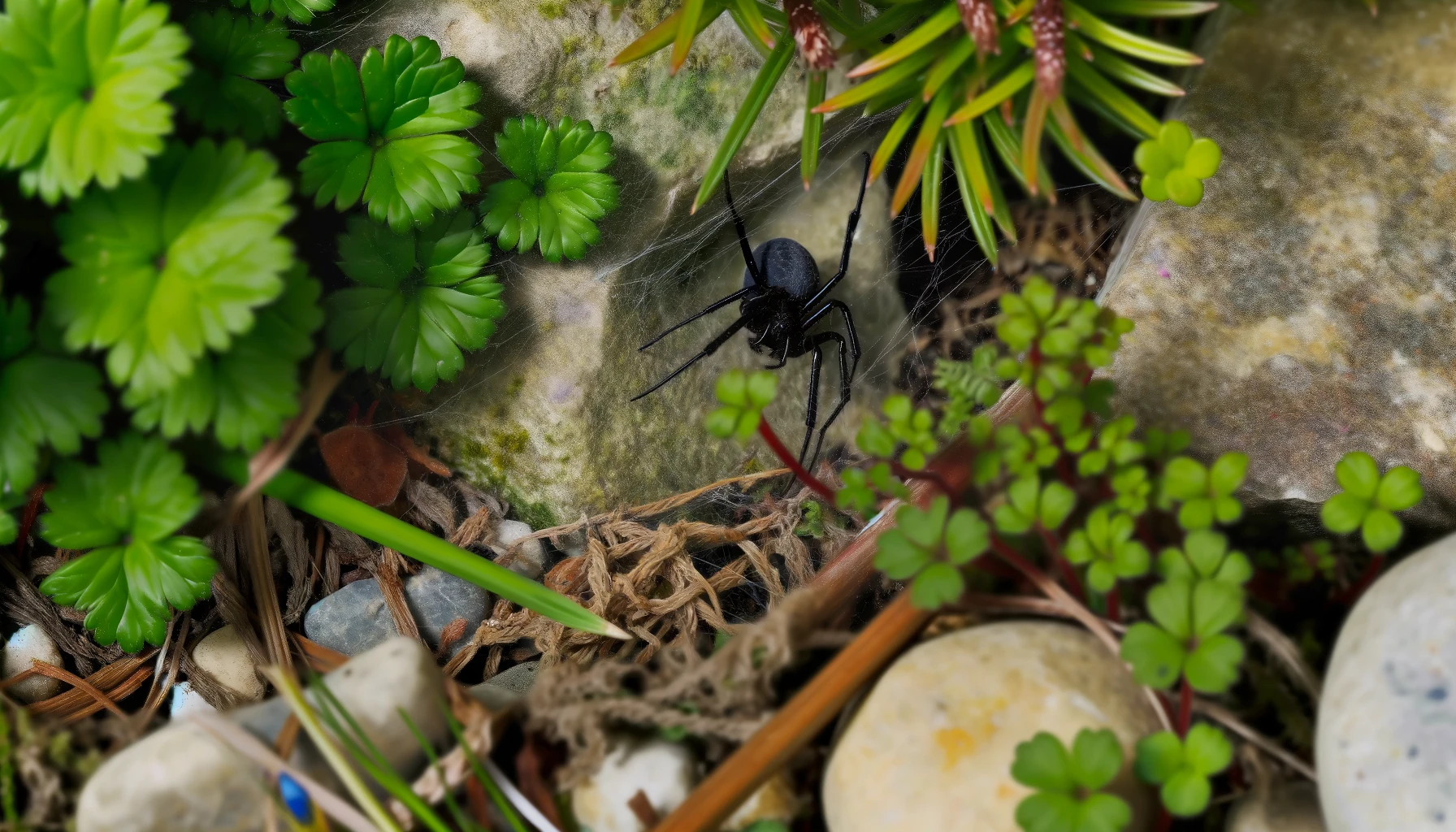
30, Dec 2023
Where Black House Spiders Thrive: Habitats Explored
The Black House Spider (Badumna insignis) is a species that evokes curiosity and, often, concern, due to its dark appearance and the commonality of its habitat in human residences. These spiders are known for their robust, velvety black or dark brown bodies and the intricate webs they weave. Understanding where they live, their behaviors, and how they interact with their environment is essential for both arachnologists and the general public.
Key Takeaways
- Black House Spiders primarily inhabit Australia and New Zealand, but they can also be found in other parts of the world due to human activity.
- They prefer dark and secluded areas, often constructing their webs in man-made structures such as window frames, sheds, and under eaves.
- Despite their menacing appearance, they are not aggressive towards humans and their bite, while venomous, is not considered dangerous.
Habitat and Distribution
The Black House Spider is predominantly found in Australia and New Zealand, thriving in both urban and rural settings. Their ability to adapt to various environments has enabled them to spread to other regions, often hitching rides in cargo and personal belongings.
Preferred Living Conditions
Black House Spiders favor locations that provide shelter and ample opportunities for catching prey. They are commonly found in:
- Corners of window frames
- Crevices in brickwork
- Under eaves and in sheds
- Inside barns and garages
Their webs are distinctive, often described as messy and funnel-shaped, designed to trap flying insects that venture too close.
Interaction with Humans
Despite their somewhat fearsome name and appearance, Black House Spiders are generally shy and avoid human interaction. The myths surrounding their danger to humans are largely unfounded. Their bite may cause discomfort but is unlikely to result in serious health issues.
Real URLs for Further Exploration
- For more information on Black House Spiders, visit the Australian Museum.
- Watch a detailed video about the life of a Black House Spider on YouTube.
Identifying a Black House Spider
Identifying a Black House Spider involves looking for several key characteristics:
- Color: Dark brown to black
- Size: Females can reach 18mm in body length, with males being smaller.
- Web: A messy, funnel-shaped web with a distinctive retreat area where the spider hides.
Understanding where Black House Spiders live and their behavior allows us to appreciate their role in the ecosystem and mitigate unwarranted fear. Their presence in our homes is more a testament to their adaptability and the shelter our buildings provide than a cause for alarm.
Managing Black House Spiders in Homes
While understanding the ecological benefits of Black House Spiders, many people prefer to keep them outside of living spaces. Here are some practical tips for managing their presence:
- Regularly clean windows, eaves, and sheds to remove webs and discourage resettling.
- Seal cracks and crevices in walls and around windows to prevent them from entering.
- Use natural repellents like peppermint oil around windows and doors.
Real URLs for Practical Advice
- Find tips and strategies for managing spiders in and around your home at PestWorld on House Spiders.
Frequently Asked Questions
Are Black House Spiders Dangerous?
Black House Spiders are often feared due to their dark appearance, but they are not considered dangerous to humans. Their bite can cause discomfort but is rarely serious.
How Can I Identify a Black House Spider?
Identify a Black House Spider by its dark color, size (with females larger than males), and the distinctive messy, funnel-shaped web with a retreat area.
Do Black House Spiders Live Alone?
Yes, Black House Spiders are solitary creatures, with each spider living and hunting alone. They only come together for mating purposes.
What Do Black House Spiders Eat?
They primarily feed on insects like flies, mosquitoes, and other small flying insects that get caught in their webs.
How Can I Prevent Black House Spiders from Entering My Home?
Prevention includes sealing entry points, keeping areas clean to discourage insect prey, and using natural repellents.
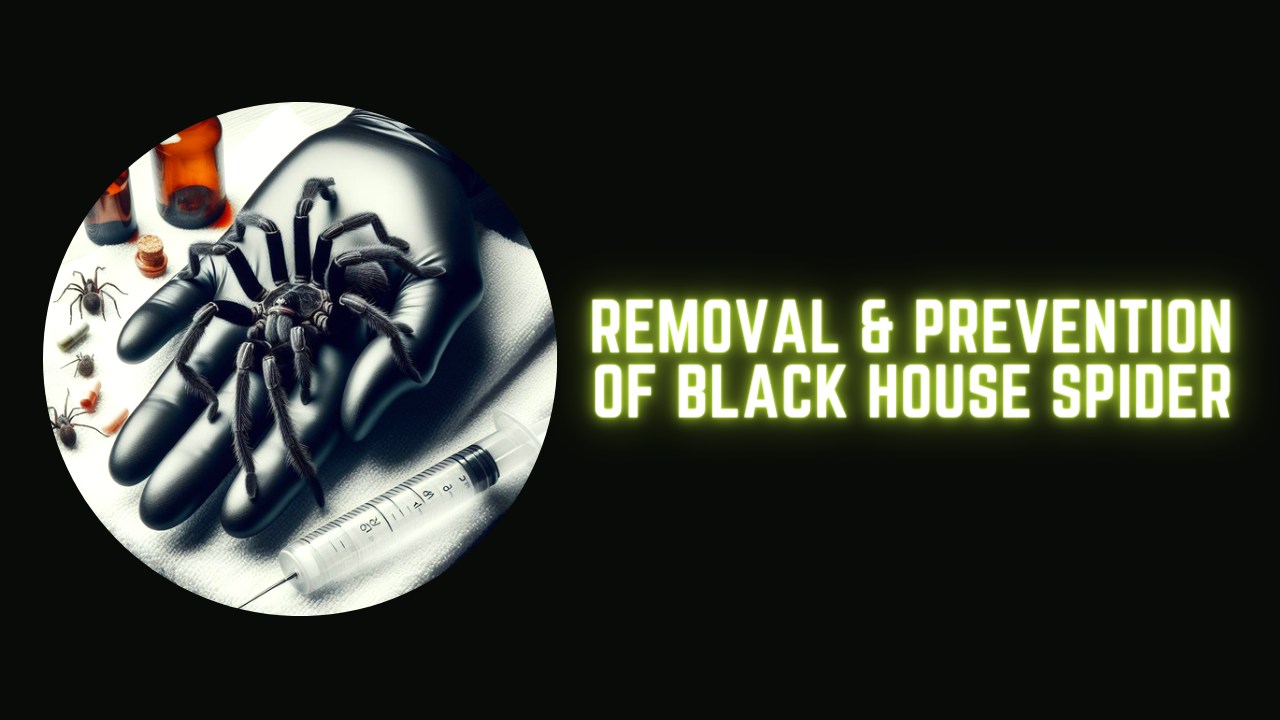
28, Dec 2023
Black House Spider Bite Symptoms and Treatment
Black house spiders provide an odd problem because they frequently lurk in the calm places of our houses and gardens. Although they are not usually aggressive, their bites may result in more significant health issues in addition to pain. We look into the world of black house spiders in this extensive guide. We will discuss common symptoms from their bites, necessary first aid protocols, when to seek medical attention, and practical ways to avoid coming into contact with these eight-legged residents. Our goal is to provide you with information and self-assurance so that you may overcome fear and uncertainty with knowledge and readiness.
Identifying Black House Spider Bites
The initial intense pain, regional swelling, and, in rare instances, milder symptoms like headaches or nausea are indicators of a black house spider bite. In contrast to more threatening species, their bites often do little damage and recover without significant issues. It’s imperative to keep an eye out for any bite for indications of an infection or allergic reaction, nevertheless. Understanding and accurately recognizing these bites is essential to allay fears and encourage cohabitation with these frequently misunderstood spiders, as encounters with them in urban areas have grown.
Detailed Symptoms of Black House Spider Bites
The variety of symptoms brought on by bites from black house spiders is examined in detail in this section. We will address the entire range of potential symptoms, from early indications like redness and swelling to less common, more severe reactions.
Redness and Swelling: One of the most common reactions to a spider bite is redness and swelling in the bite region.
Pain or Itching: At the bite site, people frequently describe experiencing acute pain or itching.
Localized Reaction: The response to a Black House Spider bite is typically restricted to the site of the bite, in contrast to some more harmful bites.
Minor Skin Reactions: Some people may get a little rash or elevated spot on their skin in the vicinity of the bite.
Immediate First Aid Measures
Discover essential first aid steps to mitigate the effects of a black house spider bite. Practical advice on managing pain, reducing swelling, and preventing infection will be provided in a clear, easy-to-follow format.
Clean the Bite: To lower the chance of infection, wash the affected area with soap and water.
Cold Compress: To reduce swelling and ease discomfort, apply a cold pack or a cloth moistened with cold water.
Elevation: To lessen swelling, raise the affected limb if the bite is on an arm or leg.
Avoid Scratching: To reduce further swelling and the chance of infection, try not to scratch the bite area.
Over-the-counter Medication: Acetaminophen and ibuprofen are two examples of over-the-counter pain relievers that can be used for pain relief.
When to Seek Medical Attention
Understanding when a spider bite requires professional medical attention is crucial. This part will guide you through recognizing signs of severe reactions and the importance of timely medical consultation.
Severe Pain: In cases where the bite’s discomfort is exceptionally intense or does not go away when taking over-the-counter medication.
Signs of Infection: Increased redness, swelling, discharge, or warmth near the bite, as well as the development of a fever, are indicators of infection.
Allergic Reaction: Signs such as trouble breathing, swelling in the throat, lips, or eyelids, or a rash that looks like hives could be an allergic reaction.
No change: When there is no discernible change in the symptoms over a few days, they continue or get worse.
Underlying disorders: After a bite, people with compromised immune systems or certain medical disorders should see a doctor.
Effective Prevention Strategies
Preventing bites is key. We’ll share expert advice on how to deter black house spiders from your living spaces and protect yourself from potential bites.
Regular Cleaning: To lessen spider hiding places, keep your home tidy and clutter-free.
Seal Entry Points: Inspect and caulk any fissures or gaps in doors, windows, and walls.
Take Down Webs: Whenever you see spider webs in your home, take them down.
Use of Insect Repellents: In locations where spiders are regularly observed, take into consideration applying chemical or natural repellents.
Maintain Outdoor Spaces: To deter spiders from building their nests close to your house, keep gardens and outdoor spaces well-kept.
Storage Caution: Exercise caution while opening boxes or products that have been stored for an extended period.
Wear Protective Clothing: As a precaution, wear gloves and long sleeves in locations where there is a high spider activity.
Professional Pest Control: If you have a persistent spider problem, consult a professional pest control service.
Understanding Black House Spiders
Gain insights into the behavior and ecology of black house spiders. This knowledge not only helps in prevention but also in fostering a healthier coexistence with these creatures.
Conclusion:
Summarizing our guide, we emphasize the power of knowledge in dealing with black house spider bites. By staying informed, you can confidently manage and prevent these common encounters.
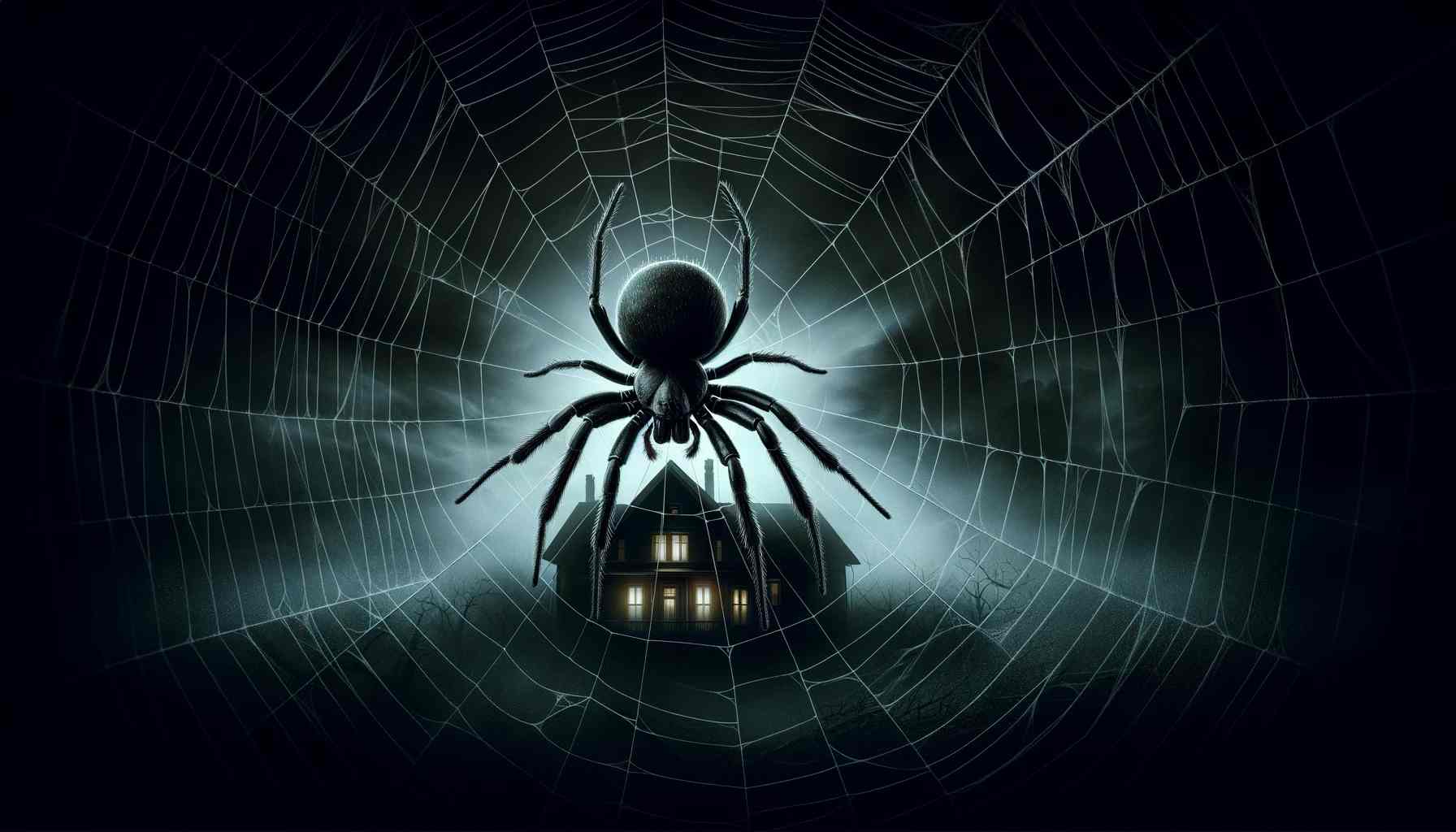
28, Dec 2023
Black House Spiders: Poisonous Facts and Misconceptions
The name “Black House Spider” describes a common species of cribellate Australian spider that creates curiosity and anxiety in equal measure. These spiders are distinguished by their strong bodies, funnel-shaped webs that decorate many Australian homes, and their dark brown to nearly black coloring.
The Architectural Marvel of Spider Webs
One cannot discuss Black House Spiders without marveling at their intricate webs. These webs, found in windowsills, entrances, and rough-barked trees, are examples of the spider’s architectural skill. The intricate, lacy constructions emphasize the spider’s place in the ecology since they are not only their places of residence but also efficient traps for unsuspecting prey like insects and bugs.
Decoding the Bite: Venom and Symptoms
While the term “venomous” often accompanies discussions about Black House Spiders, it’s essential to demystify their bite’s actual impact. Even though they have venom, just like their more frightening relative the Funnel-Web Spider, these spiders rarely bite humans and usually do so as a form of defense. Mild to moderate symptoms, such as slight swelling and discomfort, and in certain instances systemic reactions including nausea, dizziness, and sweating, can be experienced by those bitten. It’s crucial to remember that severe reactions are unusual, and the majority of people recover without the need for extensive medical care.
Understanding Their Habitat and Behavior
Black House Spiders thrive in both natural and urban environments, making their homes in secluded, undisturbed areas. Their preference for dark, sheltered spots leads them to inhabit spaces around window frames, doorways, and eaves, where they can spin their webs undisturbed. The females, known for their sedentary lifestyle, rarely leave their webs, maintaining and expanding their silken domains, while the males embark on journeys searching for mates, showcasing a fascinating aspect of their lifecycle.
The Myth vs. Reality of Black House Spiders
In the middle of the common myths about Black House Spiders, it’s important to distinguish fact from fiction. Even though they are poisonous, there is little chance that a bite from a spider will have serious effects. Rather than being a reason for concern, their presence in Australian houses is more frequently a result of natural pest control measures. Gaining knowledge about these spiders’ habits, habitat, and ecological significance can help people respect them more and feel less fearful of them.
Conclusion
The Black House Spider is an important part of nature’s intricate web, despite being the subject of many myths and misconceptions. A fresh viewpoint on these sometimes misinterpreted animals is provided by their architectural prowess, the comparatively low risk of their bites, and their role in managing insect populations. We can promote a more knowledgeable and considerate coexistence with the natural environment by learning more about these typical residents of Australian homes.
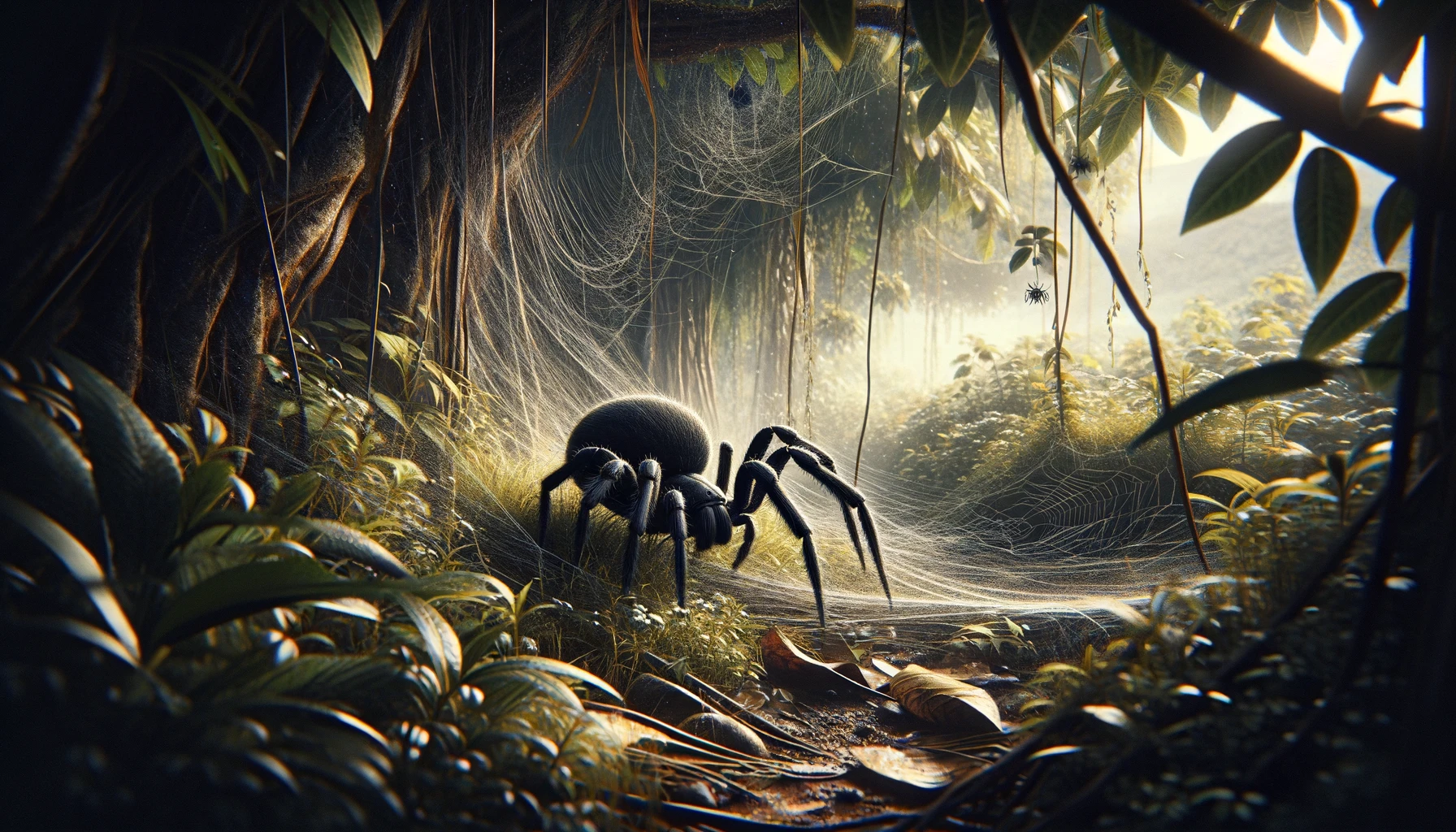
27, Dec 2023
Understanding Common Black House Spiders: A Complete Guide
Black House Spiders (Badumna insignis) are often misunderstood creatures. With their dark appearance and tendency to dwell in human residences, they can evoke unease. However, these spiders play a crucial role in our ecosystem, controlling insect populations and thus indirectly supporting human health and comfort. This guide aims to demystify these common arachnids, offering insight into their behavior, habitat, and how we can coexist with them harmoniously.
Key Takeaways
- Australia and New Zealand are home to the majority of black house spiders, though they are now found worldwide.
- They favor isolated, dark places, frequently found in homes.
- They are not aggressive toward humans, despite their appearance, and their bites are rarely dangerous.
- Understanding these spiders is key to appreciating their role in our ecosystem and mitigating any unwarranted fear.
(TOC)
- Introduction
- Habitat and Distribution
- Behavior and Diet
- Significance in the Ecosystem
- Human Interaction
- How to Manage Their Presence
Habitat and Distribution
Black House Spiders are adaptable creatures, predominantly found in Australia and New Zealand. Their distribution has expanded, however, hitching rides with human activity to reach far beyond their native lands.
- Table 1: Global Distribution of Black House Spiders
| Region | Status |
| Australia | Native |
| New Zealand | Native |
| Europe | Introduced |
| North America | Introduced |
Understanding Their Preferred Habitats
These spiders thrive in environments that offer protection and abundant food sources. They are often found in:
- Corners of window frames and doors
- Under eaves and in roof spaces
- Sheds, garages, and other outbuildings
- Among garden debris and foliage
Behavior and Diet
Black House Spiders (Badumna insignis) are fascinating creatures with intriguing behaviors and dietary habits. Understanding these aspects can help demystify these common arachnids and highlight their role in our ecosystems.
Behavior
Black House Spiders are known for their solitary and sedentary lifestyle. They spend most of their lives within the confines of their webs, waiting for prey to stumble into their carefully constructed traps. These spiders exhibit remarkable patience, often remaining motionless for long periods, which is a key strategy for conserving energy and ensuring survival.
- Web Construction: Black House Spiders build distinctive, funnel-shaped webs which serve both as their hunting grounds and their homes. The web’s structure allows the spider to detect even the slightest vibrations, signaling the presence of prey.
- Defensive Behavior: When threatened, Black House Spiders may retreat into the funnel of their web or, if escape is not an option, may adopt a defensive posture. Despite their somewhat fearsome appearance, they are generally not aggressive towards humans and will only bite if provoked and unable to flee.
Diet
The diet of Black House Spiders primarily consists of common household pests, making them a natural form of pest control. Their presence in and around homes can significantly reduce the population of:
- Insects: Including flies, mosquitoes, moths, and other small flying insects. These form the bulk of their diet and are caught directly in their webs.
- Other Arthropods: Occasionally, their diet may also include smaller spiders and other arthropods that become entangled in their webs.
- Pest Control Benefits: By preying on common pests, Black House Spiders help control insect populations naturally, reducing the need for chemical pesticides. This ecological service can contribute to a healthier living environment and supports biodiversity.
The Life Cycle of Black House Spiders
Understanding the life cycle of these spiders is crucial for managing their presence around homes and appreciating their role in the environment.
- Table 2: Life Cycle Stages
| Stage | Description |
| Egg | Laid in sacs, hidden in web retreats. |
| Spiderling | Emerge and disperse to establish their own webs. |
| Juvenile | Grow through several moults. |
| Adult | Mature spiders capable of reproduction. |

Significance in the Ecosystem
Black House Spiders play a vital role in controlling insect populations, serving as a natural form of pest control. Their presence supports the health of gardens and reduces the need for chemical insecticides.
Human Interaction
While encounters with Black House Spiders are common, it’s important to understand their behavior towards humans and how to react to their presence.
When Encountering a Black House Spider
It’s rare for these spiders to bite humans, and such incidents usually occur in self-defense. The symptoms of a bite are typically mild, including temporary pain and swelling.
How to Manage Their Presence
For those uncomfortable with sharing their space with spiders, there are non-lethal methods to encourage them to move on, such as:
- Regularly clearing webs from around the house.
- Using natural repellents like peppermint oil.
- Ensuring window screens are intact to prevent indoor entry.
By understanding the Black House Spiders, we can foster a more informed and less fearful relationship with these common arachnids. Their role in our ecosystem is invaluable, and with a bit of knowledge and tolerance, we can appreciate their presence rather than dread it.
External Resources
For those interested in learning more about Black House Spiders and their habits, the following resources are invaluable:
Continuing from the foundational insights provided in the first part of our guide on Black House Spiders, we delve deeper into practical advice, debunk common myths, and answer frequently asked questions. This additional information aims to enhance understanding and foster a more informed coexistence with these common arachnids.
Frequently Asked Questions (FAQs)
Are Black House Spiders Dangerous?
Black House Spiders are often feared due to their dark appearance, but they are not dangerous to humans. Their bites are rare and typically result only in mild symptoms.
How Can I Safely Remove Black House Spiders from My Home?
Safely removing these spiders involves gently capturing them with a glass and paper and releasing them outside, away from the house. Avoid killing them, as they play a crucial role in the ecosystem.
What Attracts Black House Spiders to My Home?
These spiders are attracted to areas with ample food supply (insects) and prefer dark, undisturbed spots to build their webs.
Debunking Myths
- Myth: Black House Spiders are aggressive.
- Fact: They are timid and avoid human contact, biting only if severely provoked.
- Myth: Their bites are deadly.
- Fact: While their bites can cause discomfort, they are not fatal to humans.
Advanced Tips for Managing Their Presence
- Seal Cracks and Openings: Prevent their entry by sealing gaps around windows and doors.
- Reduce Outdoor Lighting: Lights attract insects, which in turn attract spiders. Use yellow bulbs or dim lights to minimize this effect.
- Maintain Cleanliness: Regular vacuuming and dusting can remove spiders and their webs, discouraging them from settling.
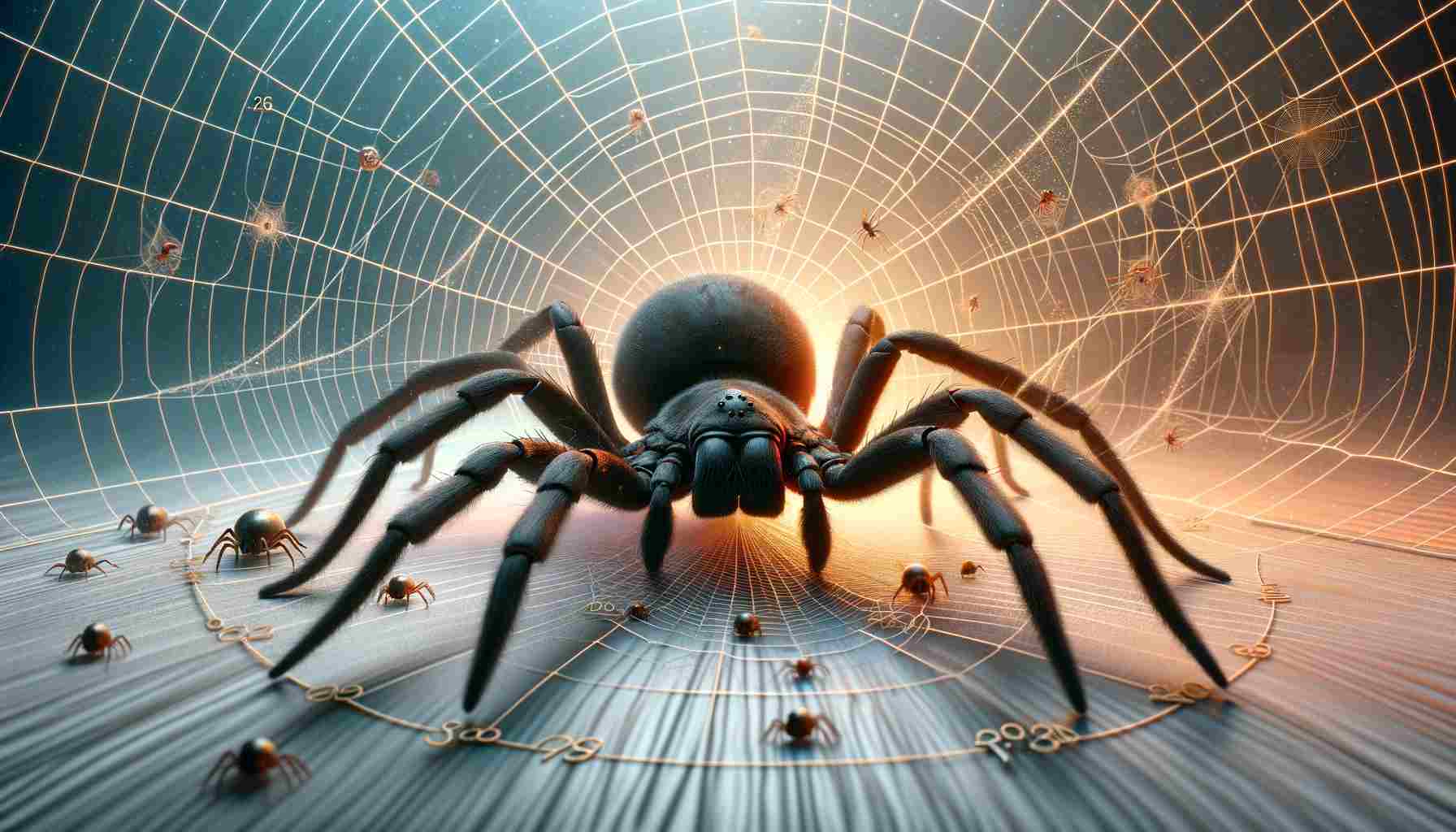
27, Dec 2023
Discovering the Lifespan of Black House Spiders
Experience the fascinating world of black house spiders, the invisible protectors of our houses, as you go on an in-depth investigation. This comprehensive book explores the unique elements of black house spider life, from their early stages as eggs to their expert web-weaving as adults, and answers the question, “How long do black house spiders live?”

Life Stages of Black House Spiders
Black house spiders, known scientifically as ‘Badumna insignis’, begin their journey as fragile, silk-encased eggs. These eggs, often hidden in secluded corners, hatch into spiderlings. As they grow into adults, these little spiders go through multiple molts, losing their exoskeletons. This transforming process, which is essential to their development, provides insight into the adaptability and durability of these spiders.
Spiderlings to Adulthood
- Molting Process: Spiderlings may go through multiple molts before reaching adulthood.
- Growth Rate: Several variables, including temperature, humidity, and the availability of food, affect the growth rate.

Factors Influencing Black House Spider Lifespan
Environmental Factors
- Humidity and Temperature: Black house spiders thrive in environments with stable humidity and temperature.
- Prey Availability: Their diet primarily consists of small insects, which plays a crucial role in their development and longevity.
- Predation Risks: They face threats from larger predators, including birds and larger spiders.
Human-Environment Impact
- Pesticide Exposure: Common household pesticides can significantly reduce their lifespan.
- Indoor vs. Outdoor: Spiders living indoors often experience different conditions that can either extend or shorten their life expectancy.
Survival Strategies and Aging Process
Black house spiders exhibit remarkable survival strategies. Their web-building is not just for catching prey but also serves as a defense mechanism against predators and environmental hazards. These spiders adjust their behavior based on age and environmental factors, providing insights into their aging process.
Web Weaving as a Survival Tool
- Strategic Placement: Webs are often constructed in high-traffic insect areas.
- Web Maintenance: Regular maintenance of their webs is vital for their survival.
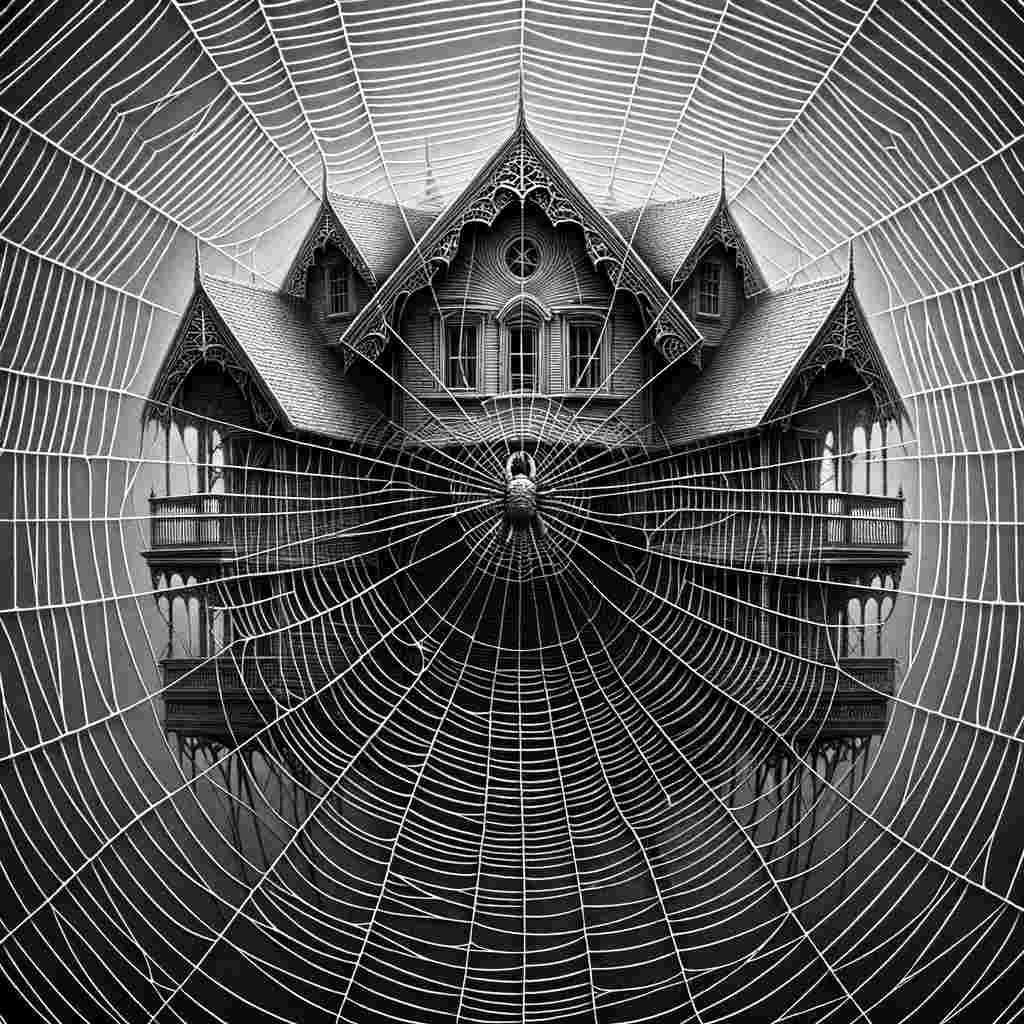
Environmental Impact on Black House Spider Life
The lifespan of black house spiders is heavily influenced by their immediate environment. In optimal conditions, with sufficient food and an ideal climate, they can live longer. On the other hand, unfavorable circumstances like low food or high temperatures might limit their life span.
Factors Affecting Lifespan in the Wild
- Natural Disasters: Events like floods or fires can destroy their habitats.
- Climate Change: Shifts in climate patterns can affect their natural lifecycle.
Average Lifespan: Estimations and Variability
The average lifespan of black house spiders is a subject of ongoing research. Generally, they can live for several years, with females often outliving males. Variations in lifespan are attributed to environmental factors, food availability, and threats from predators.
Human Interaction and Captivity Longevity
When black house spiders inhabit human dwellings, they often enjoy a safer environment, free from natural predators. This can lead to a longer lifespan compared to their outdoor counterparts.
Captivity Observations
- Controlled Environment: In captivity, with controlled conditions, their lifespan can extend significantly.
- Human Impact: Regular cleaning and human disturbance can, however, reduce their lifespan.
Conclusion:
In summary, the lifespan of black house spiders is a complex interplay of environmental factors, survival strategies, and adaptability. As we encounter these spiders in our homes, understanding their role in the ecosystem can foster appreciation and coexistence.

26, Dec 2023
Comparison Between Black House Spiders and White-Tailed Spiders
Welcome to the interesting world of spiders, where the White-Tailed and Black House Species are the main attraction! These beauties of eight legs, each with unique attributes, are similar to superheroes found in nature. As we study the appearance, habitat, and activities of these spiders, picture solving a puzzle. It’s similar to entering an adventure with spiders! Come along on this fascinating voyage as we examine and learn the mysteries of the White-Tailed and Black House spiders.
Identification:
The Black House Spider:
Introducing Badumna insignis, the scientific name for the Black House Spider. Imagine a smooth, black, robust spider with a web resembling a magnificent funnel. This spider is frequently seen hanging out in houses and other buildings, doing its spider thing.
The White-Tailed Spider:
Presenting Lampona cylindrata, the White-Tailed Spider. Its name comes from its sleek appearance, cylindrical body, and white-tipped tail. These spiders are renowned for their swift movements and somewhat nomadic lifestyle.
Habitat:
Preferred Habitats of the Black House Spider:
Black House Spiders love cozy spots like corners, crevices, and undereaves. They’re the architects of intricate webs, and you’ll often spot them in quiet places inside homes.
Where to Find White-Tailed Spiders:
On the flip side, White-Tailed Spiders prefer the great outdoors. Think garden foliage, under bark, or hanging out in leaf litter. But don’t be surprised if you find them taking a detour into homes, seeking warmth in dark corners.
Behavior:
Black House Spider Behavior:
Black House Spiders are the chill types. They enjoy spending time inside their webs, waiting for their victim to approach. Their silk-lined hiding places act as both a strategic hunting area and a comfortable place to live.
White-Tailed Spider Behavior Compared:
Now, White-Tailed Spiders are the adventurers. They are fast hunters who are always searching for food. They could be investigating different areas indoors or outside when you run across them.
Health Effects:
Are Black House Spider Bites Harmful?:
Good news – Black House Spider bites are usually no big deal for humans. Just a bit of local pain and swelling, and serious reactions are super rare. These spiders aren’t the medical drama types.
Myths and Facts About White-Tailed Spider Venom:
Don’t let the myths fool you! Studies say White-Tailed Spider bites are unlikely to cause serious health issues. Most of the time, it’s just mild symptoms, putting those scary stories to rest.
Controlling Populations:
Natural Predators that Keep Numbers Low:
Both Black House Spiders and White-Tailed Spiders have their own set of enemies. Other spiders, birds, and insects keep their populations in check, creating a balanced spider world.
Non-Toxic Control Methods:
For folks wanting to keep spiders in check, non-toxic methods work like a charm. Seal those entry points and keep things clean – no need to harm the environment.
Reducing Encounters:
Tips for Excluding Spiders from Homes:
If you want fewer spider meet-ups indoors, it’s as simple as sealing cracks, keeping things tidy, and regular cleaning. Your living space will thank you for it!
Teaching Children Not to Fear Spiders:
Time for a spider talk with the kiddos! Share the scoop on how spiders help the world and clear up any myths. It’s all about understanding, not fearing our spider pals.
Importance in the Environment:
Role of Black House Spiders as Pest Predators:
Black House Spiders are the unsung heroes of pest control. They chow down on all sorts of bugs, helping keep the insect population in check around homes.
All Creatures Great and Small in the Ecosystem:
Let’s remember – every living thing, including spiders, plays a part in keeping our planet healthy. Biodiversity is like the VIP pass to a balanced ecosystem.
Debunking Myths:
Setting the Record Straight on Spider Myths:
Time to clear the air on spider myths. Spiders aren’t the villains some make them out to be. Let’s focus on the real, amazing facts about these beneficial creatures.
Science Overcomes Superstition:
When in doubt, turn to science! Let’s use evidence-based info to kick superstitions to the curb and see spiders for the cool critters they really are.
Educating the Public:
Promoting Acceptance Not Fear:
Spread the word – spiders are friends, not foes! Public education is key to helping people appreciate and accept spiders for their role in the natural world.
Correcting Misinformation Saves Spiders:
Let’s be myth-busters and correct spider misinformation. Knowledge is power, and it helps us coexist with spiders minus the unnecessary fear.
Conclusion:
White-Tailed and Black House Spiders both have roles to perform in the dance of nature. Through debunking myths, recognizing their distinctive characteristics, and promoting cohabitation via education, we establish environments in which people and spiders dwell with far less anxiety. Let’s remember that the advantages of having spider neighbors far exceed any spidey jitters as we negotiate our own home environments.

24, Dec 2023
Banishing Black House Spiders: Your Ultimate Guide to a Spider-Free Home
Have you ever encountered a black spider in the corners of your room? This common household occurrence often leads to the pressing question: What attracts these eight-legged creatures indoors? In this comprehensive guide, we’ll uncover the factors that draw black spiders into our homes, offering insights into their behavior, the influence of seasons, and practical measures for a spider-resistant living space.
Understanding Spider Behavior: Insights into Indoor Attraction
Because of their elaborate webs and quick movements, spiders are frequently thought of as unwanted guests. It’s critical to comprehend what draws spiders indoors in order to combat infestations of them successfully. It’s surprising to learn that spiders prefer habitats that satisfy their fundamental needs rather than ones that are disorganized.
What Attracts Spiders to Your House
Key reasons for spiders entering homes include:
- Search for Food: Spiders are drawn to places with an abundance of insects, their primary food source. Effective pest control is crucial in reducing these attractants.
- Avoidance of Predators: Indoors, spiders find refuge from natural predators like birds and larger insects.
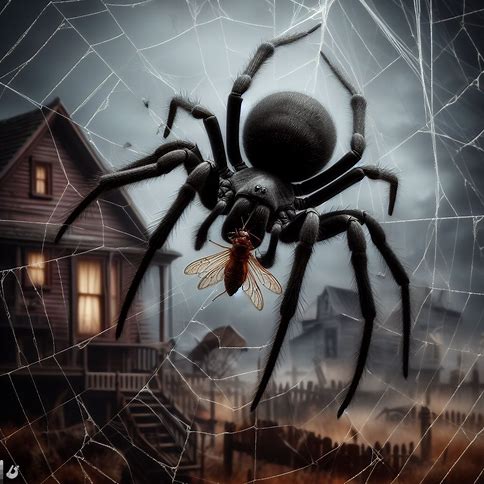
Seasonal Influence on Spider Infestations: Winter Woes
The onset of colder months often drives spiders to seek warmth and shelter indoors. Small crevices in walls, windows, and doors become gateways for these arachnids. Understanding and preparing for this seasonal behavior is key to spider prevention.
Winter-Proofing Your Home
As winter approaches, it’s essential to:
- Inspect and seal potential entry points.
- Repair cracks in walls or foundations.
- Maintain weatherproofing around windows and doors.
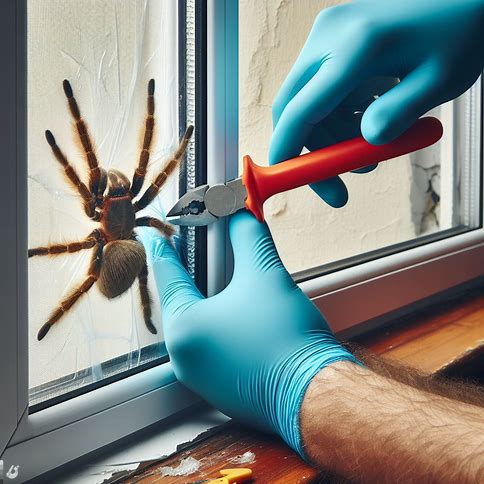
Making Your Home Less Inviting to Spiders
Breeding Grounds: Disrupting Spider Habitats
The controlled climate of homes makes them ideal for spiders. By addressing factors like consistent temperature and potential prey, we can make our spaces less attractive to spiders.
Preventive Measures for Spider Control
- Securing Entry Points: Regular inspections and sealing of gaps are crucial.
- Controlling Food Sources: Implement pest control and maintain cleanliness.
- Disrupting Spider Habitats: Regularly remove spider webs to prevent breeding and nesting.
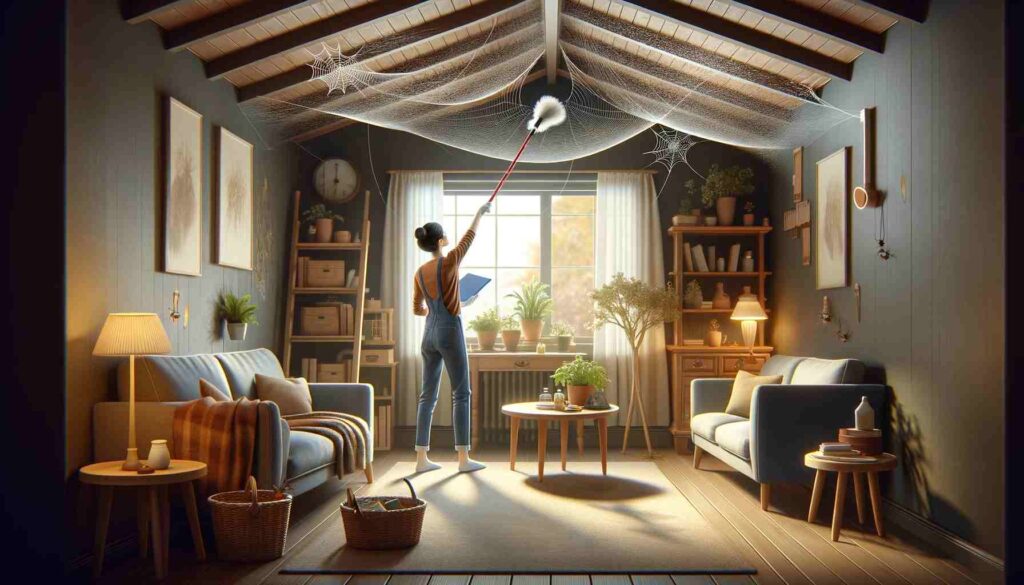
Addressing Common Concerns and FAQs
- How to Stop Spiders from Entering: Seal gaps, maintain cleanliness, and implement pest control.
- Sudden Spider Appearances: Often related to seasonal changes; prepare your home before winter.
- Spider Attraction Factors: Contrary to myth, spiders aren’t attracted by specific smells; focus on physical barriers and cleanliness.
- Spider Activity Peaks: Typically during colder months; proactive measures are key.
Conclusion: Embrace a Spider-Free Environment
By understanding the factors behind spider infestations and implementing strategic prevention measures, you can effectively maintain a spider-free home. Remember, knowledge, vigilance, and cleanliness are your best defenses against these uninvited arachnid guests. Say goodbye to black spiders and welcome peace of mind in your well-protected, spider-resistant living space.






